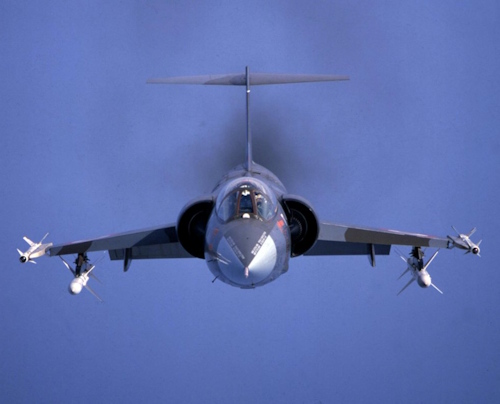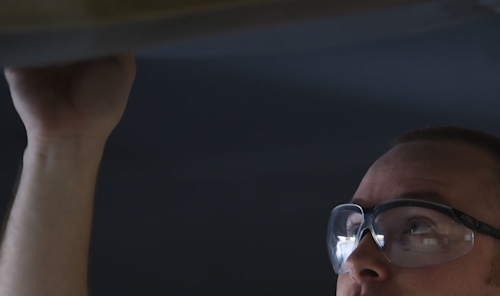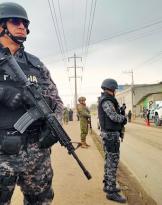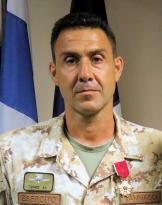Can you write about a program for a sixth generation aircraft when, twenty years later, the fifth has not yet been understood or are there still those who argue that we should have bought fourth generation aircraft?
It is due when we are already late in defining (seriously) what the needs of the national defense will be in a few decades.
The political management of the JSF (F35) program saw Italy fall into errors (naivety?) At the time of signing the agreements but also able to obtain privileges that were incredibly renounced a few years ago: for 41 fewer aircraft we have no saved millions ... but lost billions!
The Man who last year told what we have defined "the real F-35 scandal"was General Pasquale Preziosa, former Chief of Staff of the Air Force. To understand frankly (without rhetoric or annoyed silence) the program for the sixth generation" Tempest "fighter, we met him again.
What are the characteristics that distinguish the various generations of aircraft? We have third, fourth and fifth airplanes online and are about to invest in a sixth. Although countries (with other budgets) have been working on the seventh for years.
Without going too far back in time, the generations of aircraft have evolved with technological developments.

Up until the Eurofighter class, born in the 80 years, combat aircraft have been little affected by nanotechnology and cyber power since then.
With the birth of the digital age there has been a revolution in the way in which to operate: computers, networks and nano technologies are the tools for the new operation both in the physical and in the virtual world that accompanies the new era.
With the fall of the Berlin Wall, the physical threat to the West also fell and globalization began with the birth of the global financial industry.
In strategic terms, the military threat has given way to strategic competition between the powers of the globe which today express avant-garde military capabilities in order to undermine, when and if necessary, the capabilities possessed by the adversary. Whoever stops in the competition loses.
This is the case of the A2D areas, of the Kaliningrad type that have decreed the end of the operating effectiveness of the fourth generation aircraft.
It is also the case of the hypersonic capacities developed by China and Russia which have made the US anti-missile system insufficient, a pivot, until yesterday, together with conventional military capabilities, of international stability among the world powers.
With the cybernetic revolution, speed is not the benchmark but its first derivative.
Today the fifth generation of aircraft, the one with stealth characteristics and on-board equipment capable of conferring information superiority, such as F35, are performing very well the hypothesized role, but competitors are gaining ground (Chinese J20 and Russians ON 57).
It's time to fine-tune the next generation of aircraft.
The US launched the F35 replacement for the Next Generation Air Dominance; UK, Italy and Sweden have signed up for the new Tempest aircraft; France and Germany have agreed to develop the FCAS (Future Combat Air System) and within NATO, Turkey plans to develop the TF-X.
What means the sixth generation remains, for many of the countries mentioned, unclear and not definable in detail.
Some of the countries mentioned have limited technological knowledge of fifth-generation aircraft and the mock-ups of the aircraft of the future presented, seem to trace silhouettes already known such as F35 and F22 (photo).
Only the US has already outlined some requirements for the sixth generation.
In particular, they are developing:
- "digital engineering", to accelerate the construction and industrialization processes of the new aircraft; in the 21st century, at the current pace we will not experience 100 years of progress but 20.000 (Ray Kurzweil),
- advanced artificial intelligence, which can directly provide "targeting" in terms of seconds,
- new kinetic and non-kinetic precision weapons,
- an expansion of the combat platforms network, able to exchange data in real time to reach information and intervention "dominance"
 - new non-technologies applied to materials to reduce radar and IR signatures,
- new non-technologies applied to materials to reduce radar and IR signatures,
- new engines with the application of the "third air stream" for greater overall efficiency.
The new platforms will be part of a complex information system consisting of many nodal points able to acquire and continuously exchange data and execute decisions; all this was developed in the context of the "Air Superiority 2030 flight plan", for the next "Combat Air Power".
Being nodes of a network will give complexity and resilience to the military apparatus as a whole.
The new B-21 bomber outgoing from Northrop Grumman in the 2020-2021 will have mature fifth-generation technological capabilities and some initial sixth capacity.
The "Dominance" in the information field and the "Dominance" in the "multidomain" intervention capabilities will characterize the strategic competition of the future.
Even China, by now, is on the same wavelength as the USA and has stated that, in the 2030, it will reach the "Dominance" in the field of Artificial Intelligence.
Everybody focuses on Artificial Intelligence, because it will have a disruptive power in at least two fields in the military sphere: the automation of tasks, the behavior prediction, it will influence the OODA-Observation, Orientation, Decision, Action cycle and will be indispensable for the defense against hypersonic armaments.
 Agreement with the British for the Tempest: the best choice?
Agreement with the British for the Tempest: the best choice?
Today's agreements are the result of the country's policy and pre-existing industrial agreements.
France and Germany have announced the new FCAS aircraft and Italy has taken good note of the French-German intentions.
In the absence of real openings to political and industrial participation in the project, Italy, which shares a part of the Defense Industry with UK, has worked for the most obvious and available solution.
From the beginning, however, Italian industry has supported the need not to divide the European military industrial base on the new fighter of the future, mindful of the past that in Europe saw the birth and competition of three fighter aircraft: Eurofighter, Grippen and Rafale for a contained catchment area that did not generate economies of scale.
Even the head of the European Defense Agency (EDA) Jorge Domecq has already envisaged a certain level of convergence between the two programs due to problems of technological and financial sustainability abandoning the terrain of competition.
The agreement with the British by Italy was necessary for the departure of the new company.
In the future, however, it will be necessary to converge the programs on multiple levels, to ensure not only the development of the company, but also Logistics Sustainability over time with common "supply chain" networks.

Without the necessary levels of training, operational and logistical interoperability, the new weapon systems will have low operational efficiency.
The new platforms will serve NATO or multinational coalition needs that will have to share the same standards in order to work together as a "team".
The F35 is an "omniruolo". What tasks will Tempest have to fulfill? Is air superiority the primary role?
The frequency of air combat after the Korean and Vietnam war has been greatly reduced and it is believed that in the future it will be reduced even more.
In the informative and decisional superiority, which will characterize the modus operandi of the future, air superiority is also contained.
For low-resolution radar and IR aircraft, which will use nano technologies for heat redistribution to standardize the surface temperature of the aircraft, not being observed and having the opportunity to observe is the main key to understanding the new air superiority .
On the fifth generation aircraft the electro-optical system for the "Targeting System" and the "Distribute Aperture System" already has the ability to carry out the advanced discovery (early) of the opposing aircraft. The aforementioned system is able to prevent any possibility of approaching dangerous distances of non-friendly aircraft.
This capacity will be further enhanced in the future.
Will we be able to support financing and development and share UK standards or upgrades?
The moment of forecasts coincides with that of error.
The future is uncertain by definition and reality belongs to complexity, to which we are unprepared even at the university level.

Nevertheless, the geopolitical reading of our country and our history will help us to identify some trends on the subject.
All the European-made aircraft of the last 50 years, such as Tornado (tri national) and Eurofighter (quadrinational), have been built and, over time, updated with heavy currency.
For Italy, both aircraft were financed by the Italian Parliament with ad hoc Laws as in other countries.
The Tempest aircraft, if it were to remain trinational, will follow the fate of its predecessor Tornado, with some negative parametric variation, as well as the FCAS aircraft.
Taking as a benchmark the sum of the national GDPs of the countries participating in the TEMPEST, FCAS, TORNADO and EUROFIGHTER companies, the following elements can be noted:
- the Tornado could count on three countries whose GDP sum was equal to 8,2 trillions of $ (2017 values),
- the Eurofighter could count on a summation of 10,5 $ trillion,
- the FCAS aircraft will have the potential of 7,5 trillions,
- the Tempest aircraft on a trillion 5 potentiality instead.
The financial potential of the two new European fighter planes depart both with a negative financial handicap and with problems of economy of scale due to the limited catchment area.
If the two Tempest and FCAS projects were to be merged into a single aircraft, the financial sustainability could be parameterized to values greater than 12,2 trillion of $ given equivalent to the Chinese GDP.
By extrapolation, if all EU countries express the same needs, the parameter would bring 18,5 trillions of $ very close to the US parameter equal to 19,4 trillions of $.
Italy will play its part in both the financial and technical industrial aspects of the new program and will continuously support the convergence of the programs both for a higher quality of the final product and for a better cost efficiency.
 Competition and competition exist in the USA. In "poor Europe", will comparisons with France and Germany bring about healthy benefits and dynamics?
Competition and competition exist in the USA. In "poor Europe", will comparisons with France and Germany bring about healthy benefits and dynamics?
In the US, both competition and competition have not always been perfect.
The reduction of the US defense industrial base, made in the past, was the result of studies to be able to compete in the new globalized international market, which required economies of scale much higher than those expressed by the previous industrial base.
The American domestic market is defined as liberalist, with the pillars of the "Buy American Act" which limits the entry of conflicting products with indigenous productions.
Unfortunately, the "poor Europe" is not complete in its state expression, it presents only a eurozone that does not include all the countries of the Union, does not have a European industrial base and has a large number of national industries, some of which can be superimposed by technology and products to those of other EU countries.
When it is stated that the European Union's GDP amounts to $ 18,5 trillions, it is also necessary to specify that the European Union does not produce GDP; the 18,5 is only a summation of many autonomous and sovereign national GDPs.
With these premises: what will be achieved by France and Germany, in terms of military capabilities, will benefit individual participating countries and not other European countries.
Cameri, the headquarters of the FACO of the F35, in a few years thanks to the tafazziano cutting of the aircraft, will see work reduced. A possibility of maintaining production capacities and know-how acquired?
Cameri is a piece of US industrial technology granted to Italy. Our industry has had the opportunity to operate with the fifth generation technology competently.

Italy is ready for the development of new technologies for the next fighter aircraft, thanks to the know-how acquired on the Eurofighter and the F35 aircraft.
IThe Cameri industrial site will continue to operate on F35s with a European vocation for both assembly and heavy maintenance of the aircraft until the end of the operational life of the F35.
The part dedicated to the assembly of the wings, at the end of the contract for the production of the 800 wing boxes, can be, in principle, available for further industrial needs, among which the new European aircraft could find space safeguarding the levels of safety required.
I believe that, in this regard, our industry is already developing the industrial plans, based on the hypothesized holdings.
Unfortunately, there are no rational explanations for F35 aircraft cutting yet.
The cut caused a sudden loss of approximately 5 MLD of $ of the expected contract, for the construction of the "wing boxes" by Leonardo, whose number was reduced from 1200 to 800 (from 12 Mld potential to 8 mld) and Leonardo today shows the best "learning curve" in the F35 industrial context.
Moreover, the proportionality between the number of aircraft only declared to be acquired and the access to potential orders, was part of the basic contract made with the USA since the beginning of the programmatic need.
The policy, in the decision-making acts, cannot disregard the negative consequences that the decision will then bring about for the country, for employment and for the coffers of the national industry.
The theorem of the resource triangle, explained to the universities, unfortunately is little known and the consequences are then touched by hand.
 The Americans shared F35's stealth technology with the British but not with us. Will the Tempest partnership allow us to finally get the same skills?
The Americans shared F35's stealth technology with the British but not with us. Will the Tempest partnership allow us to finally get the same skills?
Americans by law cannot share "edge" technologies with other countries.
Stealth technology is to be considered among the non-transferable technologies for the USA.
The British are part of the "Five Eyes" intelligence community and the "Disclosure Policy" level for them is higher than in other countries.
UK invested in research and development of F35, 2 billion and had access to the first level of participation in the program.
Italy instead invested half of the funds made available to the British and had access to the second level of participation.
Nevertheless, the only "assembly line" for F35 aircraft outside the USA was assigned to Italy and not to the UK, which had also declared the acquisition of an initial number of aircraft higher than the Italian ones, with the addition of the construction of wing boxes and internal equipment assembly for more than a third of the world fleet of F35 aircraft.
Remembering these elements helps us to better evaluate the high industrial consideration that our country has in the international circuit.
For the new Tempest program, the negotiation of the division of activities to be developed based on the industrial skills possessed and the percentage of financial participation in the program by the individual country, will determine the number of industrial activities to be assigned.
 What we will be able to sow we will harvest.
What we will be able to sow we will harvest.
Only the construction of an EDIB - European Defense industrial Base - will be able to eliminate competition between individual European countries by fostering cooperation.
The main vulnus of our country is the schizophrenia of politics. If you were a foreigner, would you agree with the Italians?
Every country historically suffers from its own ills and we are no less so: the history of individual countries is full of behavioral anomalies.
It seems to me that today's international framework is presenting more than a few behavioral anomalies, with high levels of both domestic and foreign political conflict. I would not like to mention them one by one so as not to make the mistake of not quoting them all.
Italy has made two important political choices in history for its security and stability: NATO and the European Union.
In terms of internal politics, from 1861 onwards there have been 131 governments in 158 years of Italian history, instead of the predictable 31.
This data is indicative of the high internal ferment of Italian party politics which leads to two results: inability to give meaning to reforms to adapt the country to new needs and foreign policy influence.
Nevertheless, the country in its complex history has always shown that it knows how to take and complete great initiatives, of course: not without suffering and a lot of patience.
Italy belongs to the G7 and is, despite everything, the eighth.
Photo: BAE Systems / Air Force / US Air Force / US Navy













